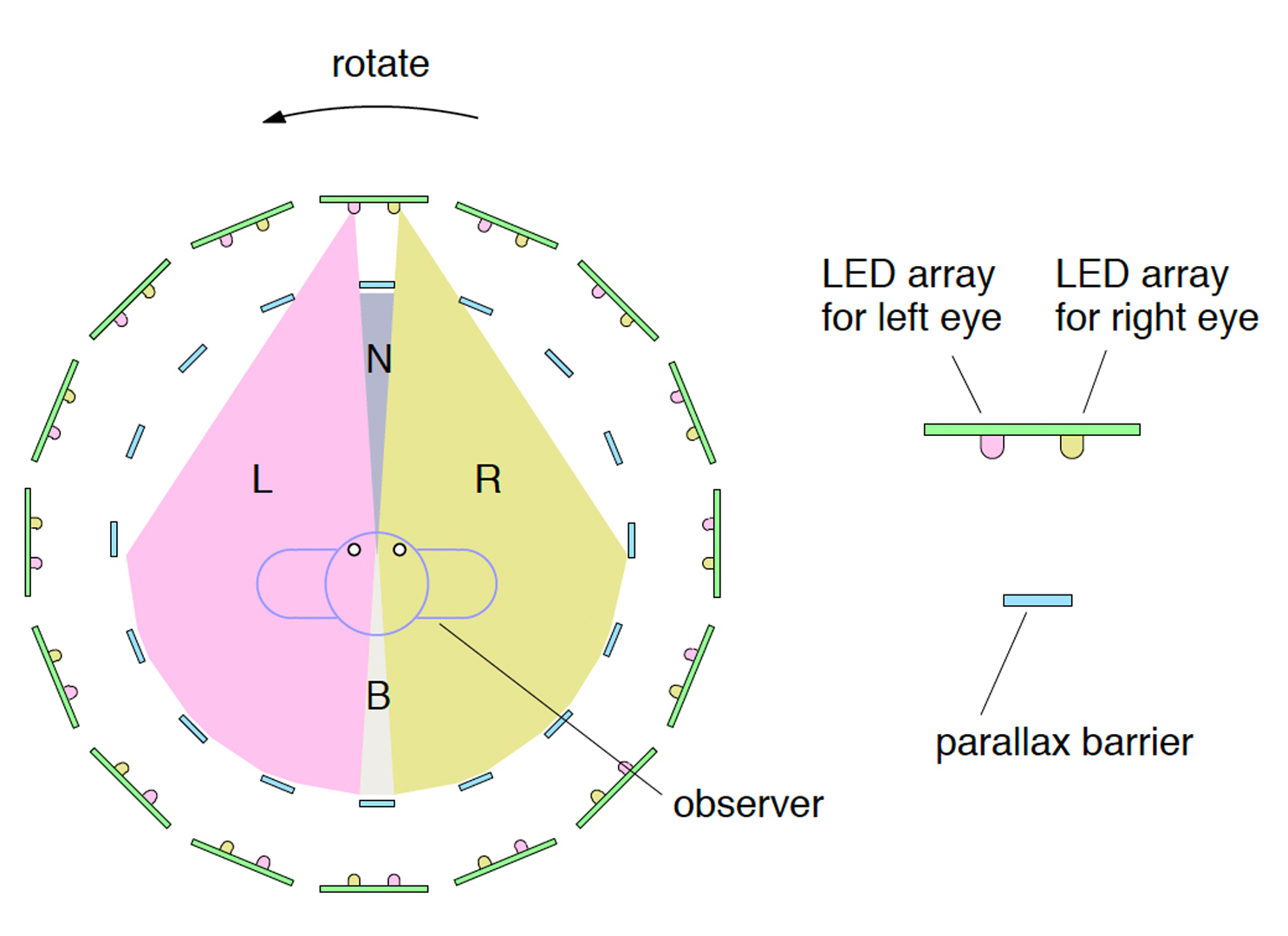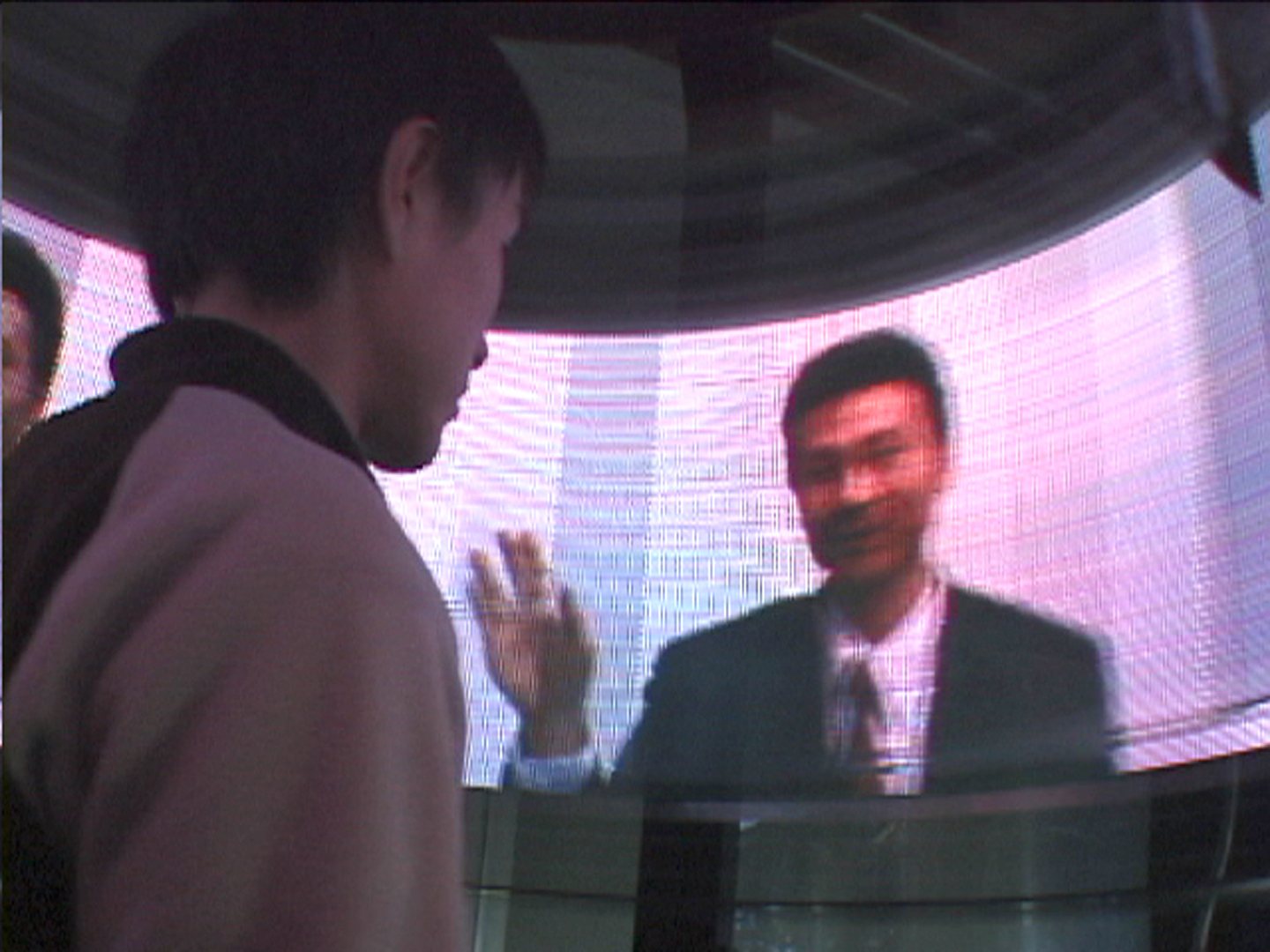“TWISTER: A Media Booth” by Tanaka, Hayashi, Kunita, Inami, Maeda, et al. …
Conference:
- SIGGRAPH 2002
-
More from SIGGRAPH 2002:


Type(s):
E-Tech Type(s):
- Displays & Projection
Entry Number: 81
Title:
- TWISTER: A Media Booth
Presenter(s):
Description:
TWISTER (Telexistence Wide-angle Immersive STEReoscope) is an immersive full-color autostereoscopic display, designed for a face-to-face telecommunication system called “mutual telexistence”, where people in distant locations can communicate as if they were in the same virtual three dimensional space.
The basic idea of mutual telexistence is the projection of human beings into a virtual environment in real time[Tachi et al. 1996][Kunita et al. 1999]. Each human user resides inside a booth, which displays a live full-color panoramic and autostereoscopic images to the user, and at the same time, captures images of the user from every angle. Autostereoscopic here means there are no obstacles to hide the user’s face, and therefore, the face of the observer can be clearly seen. With multiple booths, people at remote locations can meet together as if they were close at hand.
TWISTER has rotating display units surrounding the observer. One unit consists of two LED (Light-Emitting Diode) arrays and a parallax barrier. Each LED array consists of pairs of red, green, and blue LED’s, and displays time-varying patterns so that the observer can perceive an image. Due to the use of LED, TWISTER can be used as a display of high intensity full-color images for use in a bright room. The rotation of the display unit makes it a wide angle display. In fact, the angle of view as a normal display is 360 degrees.
The key device for autostereopsis is the rotating parallax barrier. One of the LED arrays is for the left eye, and the other is for the right eye. Because the parallax barrier obscures the opposite side LED emission, different images are shown to the left and right eyes. The angle of view as a stereoscopic display depends on the direction and the position of the observer. If the head of the observer is fixed, it exceeds 120 degrees. Thus, the observer can experience panoramic
Other Information:
References
Kunita, Y., Inami, M., Maeda, T., and Tachi, S. 1999.
Prototype system of mutual tele-existence. In ACM SIGGRAPH
’99 Conference Abstracts and Applications, 267.
Tachi, S., Maeda, T., Yanagida, Y., Koyanagi, M., and
Yokoyama, H. 1996. A method of mutual tele-existence
in a virtual environment. In Proceedings of the ICAT’96,
9–18.
Additional Images:
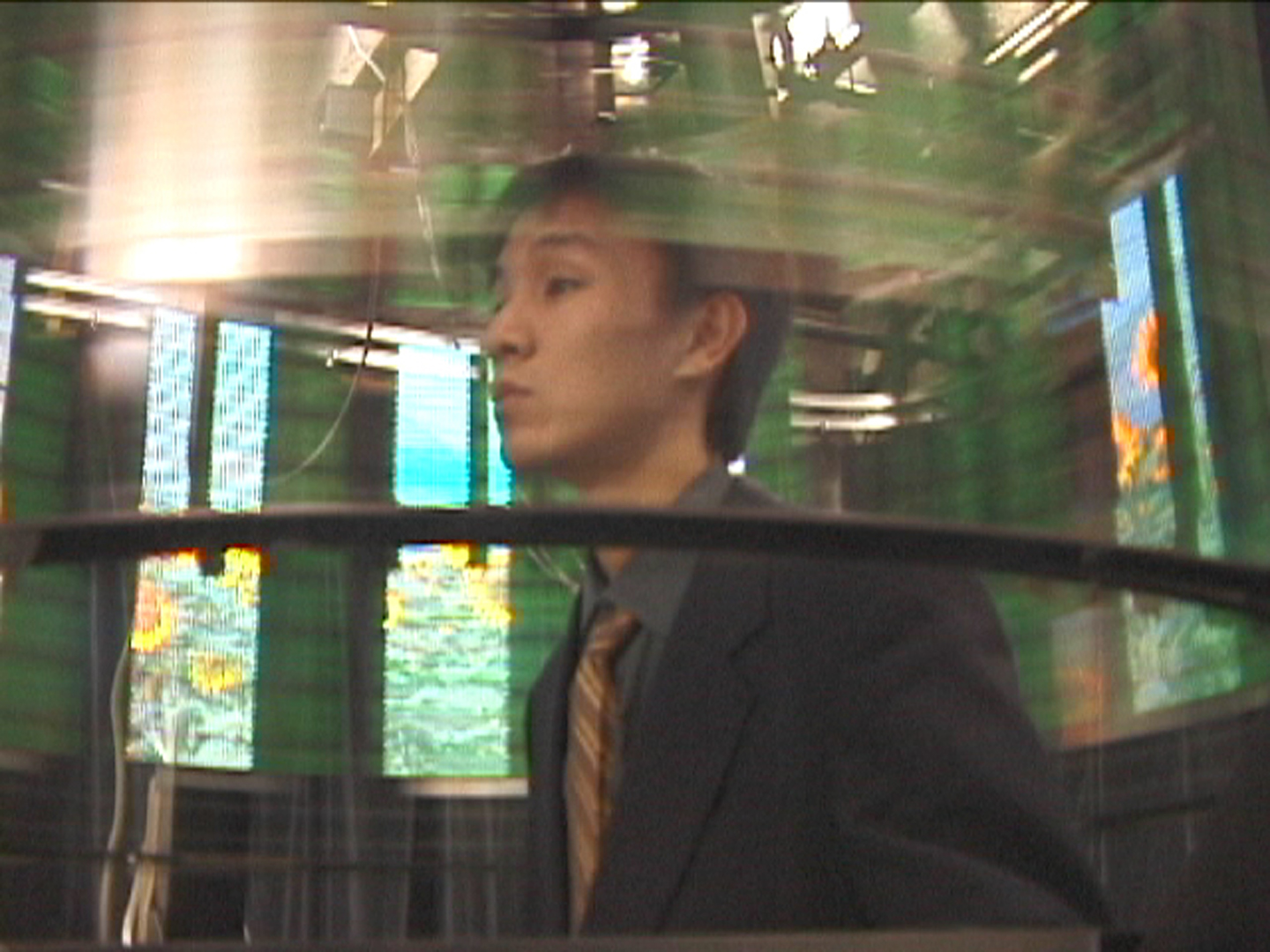
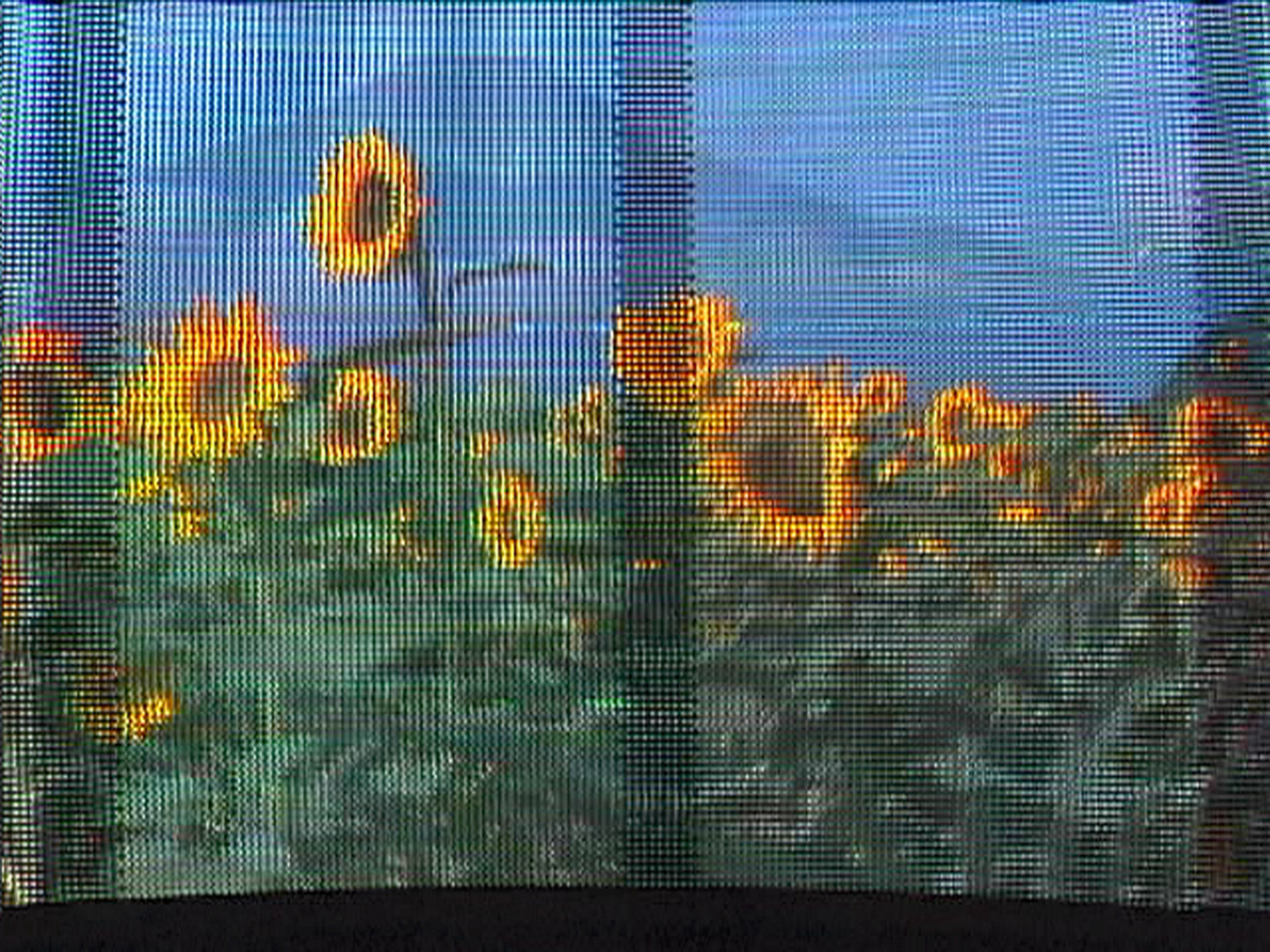
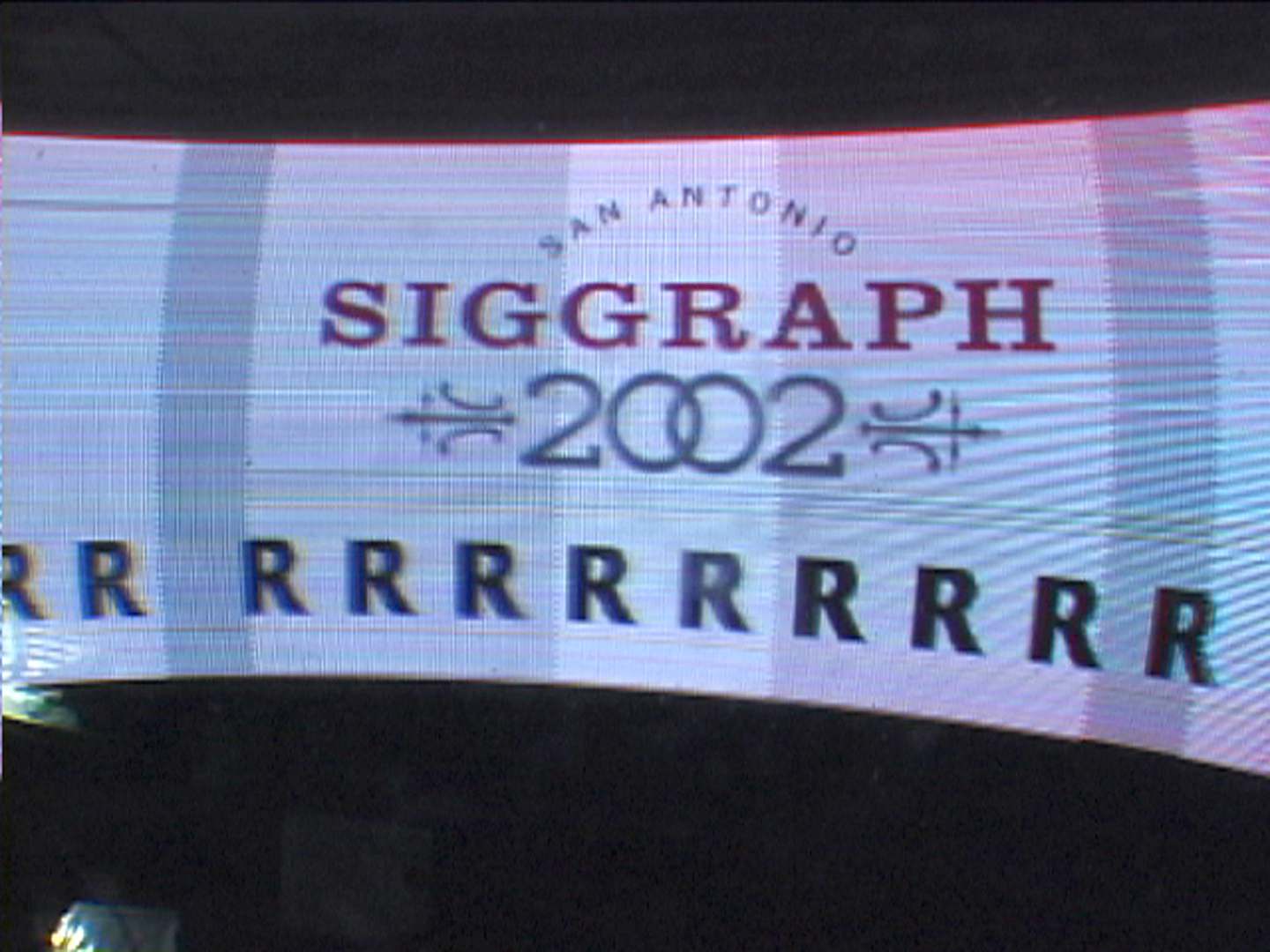

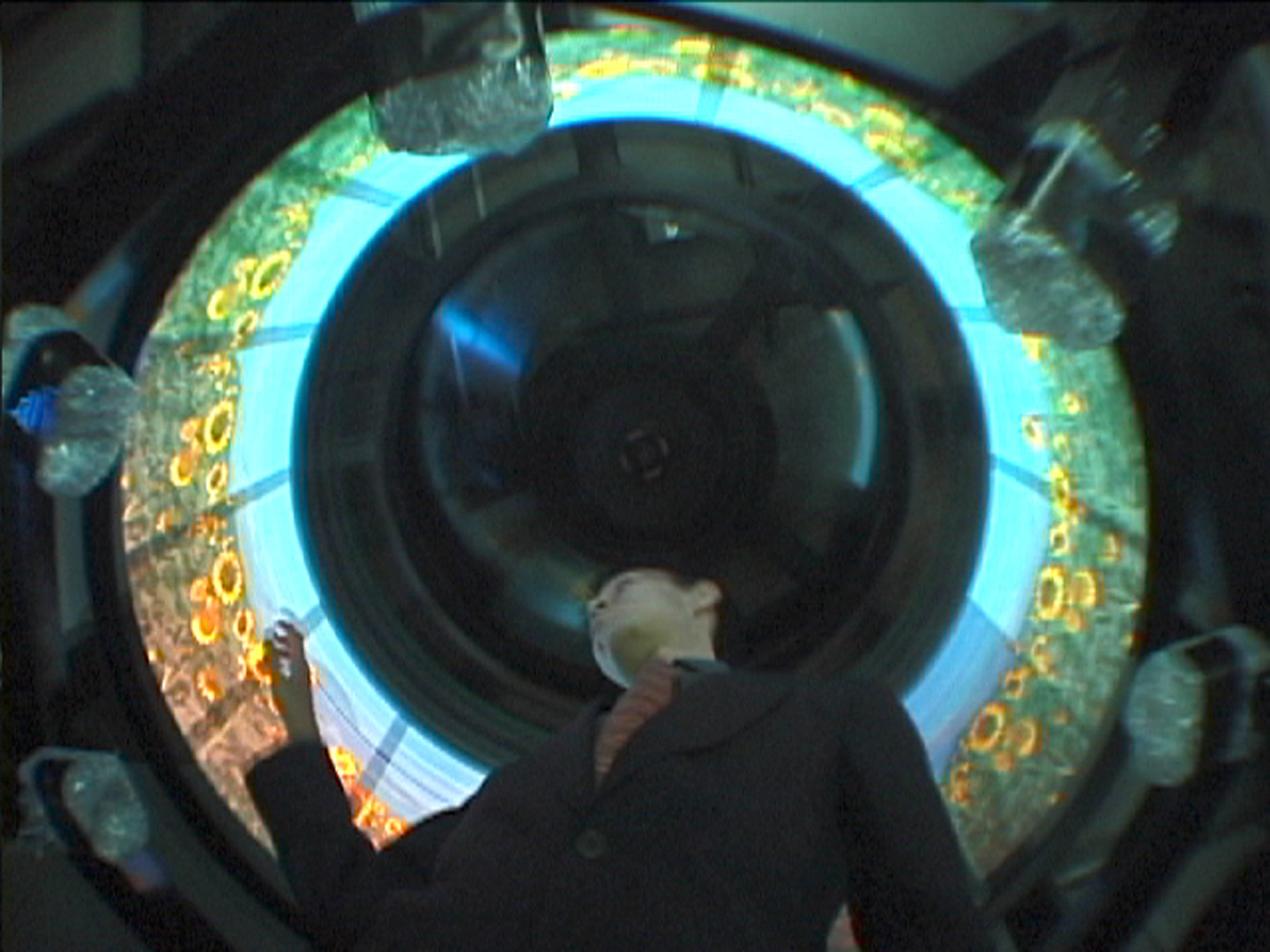
Acknowledgements:
Acknowledgments
This research has been conducted as a
part of the CREST Telexistence Communication Systems
Project supported by JST (Japan Science and Technology
Corporation)

